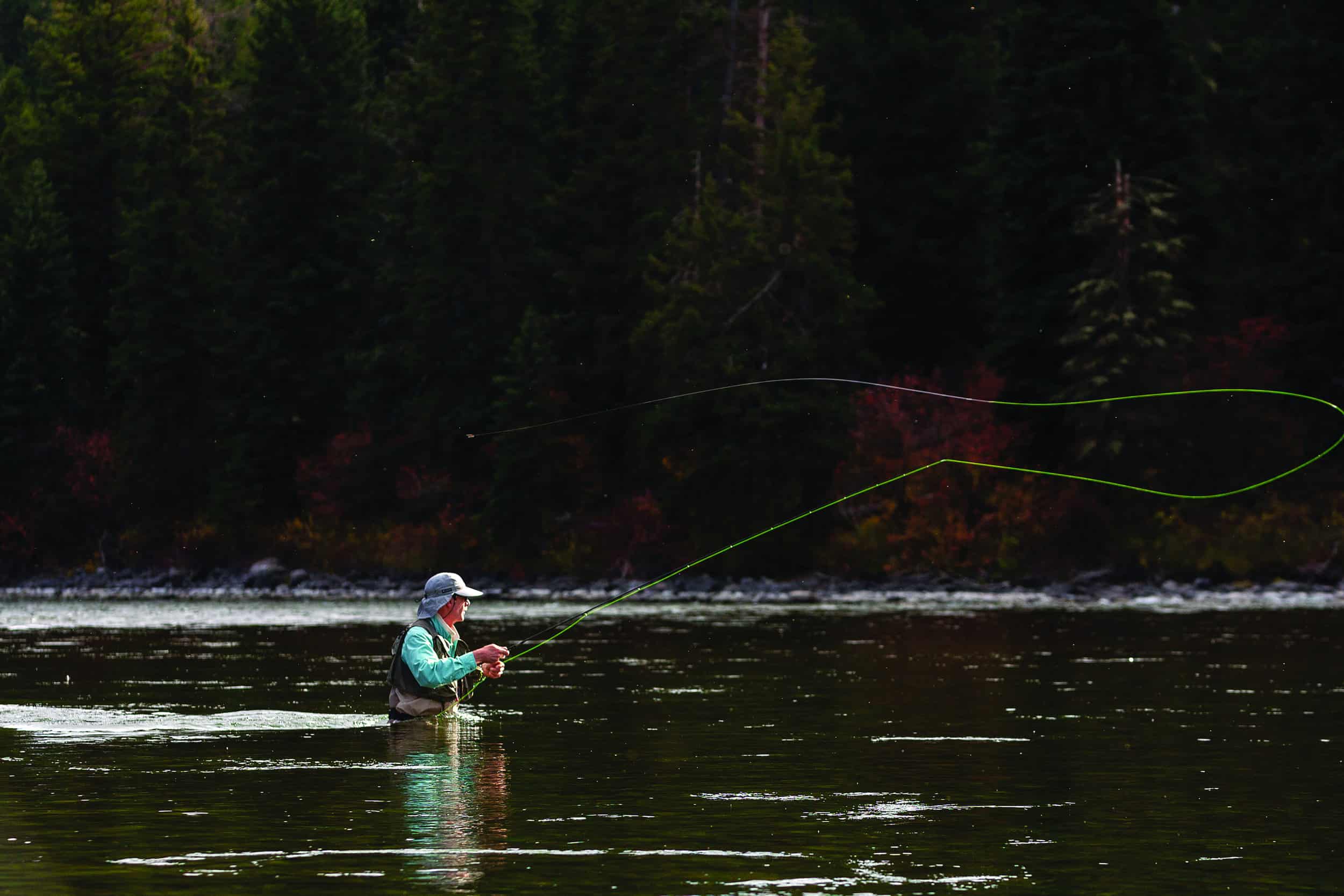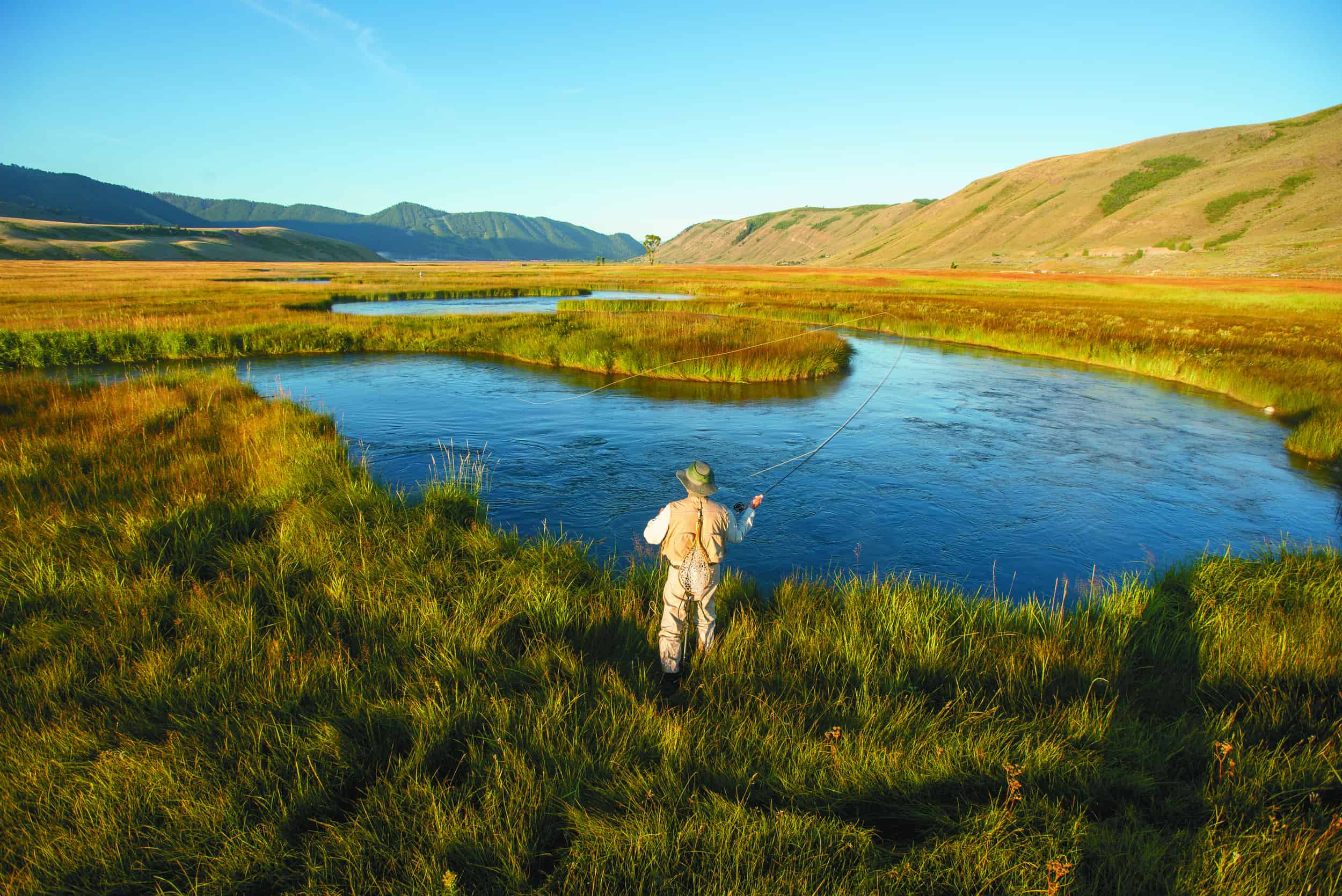Read The
Current Issue
The Perfect Fly Cast
A “good fly cast” will catch a trout.
A “great fly cast” travels an adequate distance and will catch a trout.
A “perfect fly cast” sails aerodynamically, lands precisely, and makes catching trout very enjoyable.
// By Paul Bruun
To deliver a trout fly accurately, a pair of nearly identical, linked fly rod casting motions are necessary. These are the backcast and the forward cast. A fly cast differs in one way from the formidable rotational bat, racquet, and club swings other recreations emphasize: The best casts result from a defined rod stoppage to punctuate both the backcast and again at the conclusion to propel the forward cast.
The stop elaborated: I’ll stand behind any beginner with his/her fly rod positioned vertically (12 o’clock) while I tightly hold 50 feet of their extended fly line, leader, and fly at my shoulder level. After my countdown and the simultaneous release of the fly and their forward cast, an admirable 50-foot cast happens every time. That’s how important a properly straightened backcast produced by a definite rod stop is to making the perfect forward cast.
Beginners improve by peeking over a shoulder to watch their backcast.
Backcasts and forward casts done without completely releasing the line are called false casts and allow gradual line lengthening. One or two false casts to measure and add distance are necessary before the final forward cast. More valuable than expensive fly rods and lines, pronounced stops with the rod at both ends of the casting cycle consistently guarantee better results. Practice casting with a leader and hookless fly or yarn, and always have a target, even just a floating leaf, to improve accuracy.
A well-paused backcast followed by a smooth forward cast power application allows the rod to reverse its direction, sending the line forward. Another stop with the rod tip at or below eye/shoulder level accelerates the line forward and creates an aerodynamic tight loop that pulls spare fly line with the cast.
When the right timing occurs, fly rods radiate a noticeable and satisfying feeling that says, that cast was just right.

Casting Rules
- Begin with a light but solid hand grip with your thumb on top of the handle. Squeeze grip during forward casts and backcasts.
- Remain relaxed but make your forearm an extension of the rod, stiffening the wrist and allowing only the elbow to hinge during casting.
- Make the thumb a casting sight. Rod tips follow and stop with the thumb. Lines go where rod tips go. Roundhousing and jerky or pounding rod motions ruin line-loop aerodynamics. Cast smoothly.
- Aim casts above the water. As the rod tip stops, it creates the desired aerodynamic tight line loop to propel a perfect forward cast. Eliminate disastrous loose-wrist activity that hurls backcasts and forward casts downward, killing the line trajectory.
- Most poor casts result from not waiting long enough on the backcast. The best forward casts are born from good backcasts. Stopping the fly rod almost vertically during the backcast keeps lines high and straight. Fly lines are designed to make a specific fly rod weight perform, i.e. a 6-weight line suits a 6-weight rod. Good casters wait on the backcast for the line to straighten fully and load their rod before beginning their forward cast.
- Firmly control extra (running) line in the hand not holding the rod. Allow the line to slide through fingers only after a forward cast is underway. Otherwise, the backcast pulls loosely held spare line out and sabotages the forward cast even before it starts.
- Keep extra fly line on the reel to avoid tangling, twisting, or dragging it in dirt and mud. Stretch fly line and leader physically before casting and fishing. Removing invisible dirt improves casting ease and accuracy. Frequently polish 30 to 40 feet of fly line with several pulls through a clean cloth.
- Skillful fly casting requires study and practice. Many excellent how-to casting books and videos are available. Happily, fly casting is mastered by all ages of men and women. Many believe fly casting is the most challenging way to fish. When one relishes fly casting, it becomes the most enjoyable way to fish. JH





